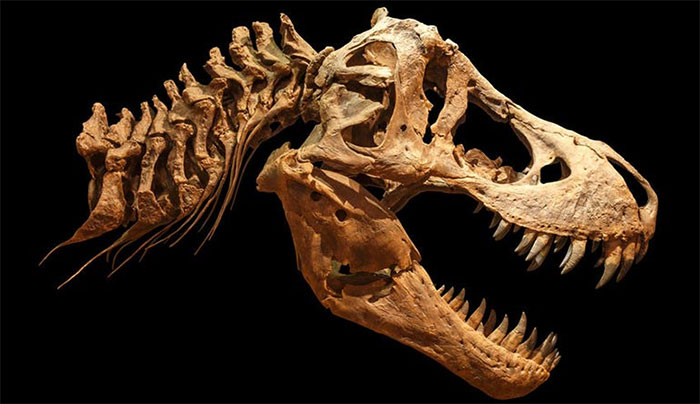Tyrant dinosaurs had 'air conditioning' in mind
The latest research shows that the T-Rex's skull has an air-conditioned function.
According to Science Daily, researchers from the University of Missouri, Ohio and Florida have identified Tyrannosaurus Rex (T-Rex) dinosaurs that have an air conditioner in their heads.
Scientists previously believed that the two large holes in T-Rex's skull contained jaw-supporting muscles. However, Professor Casey Holliday of MU School of Medicine confirmed that the above opinion was incorrect.
'It's strange that a muscle grows from a jaw, rotates 90 degrees and walks along the cranial arch . We now have a lot of evidence confirming how blood vessels in this area, based on research from crocodiles. as well as other reptiles, ' Holliday said.
This group of professors used thermal imaging cameras to test samples at the St. Crocodile Farm. Augustine in Florida. New evidence helps them come up with a new theory about the skull of T-Rex.
'The body temperature of a crocodile depends on its environment , ' said Kent Vliet, an expert at the University of Florida.

T-Rex skull.(Photo: Sciencedaily).
When it is cold, the thermal imagery shows large hot spots in the holes in the arches of warmed crocodiles, indicating the temperature inside the sample is rising. When it gets warmer, the upper holes shrink, as if they were turned off to keep the temperature cool.
This is consistent with previous studies, which have demonstrated that the crocodile has a cross circulation system, or an internal thermostat.
Holliday and his team took advantage of the data for checking fossils of dinosaurs and crocodiles to see how the holes in this skull changed over time.
'Like T-Rex, alligators have holes in their skulls and they're filled with blood vessels . For over 100 years, we've been putting muscles into space similar to dinosaurs. With the results of current animal anatomy and physiology, we will have a new perspective on the skull structure of T-Rex, '' said Larry Witmer, professor of anatomy at Ohio University.
- Hey, I am the T-Rex tyrant of Jurassic World and you are all wrong about me!
- T-rex tyrant dinosaurs also know 'love' - the shocking study of scientists
- Discover super big tyrant dinosaurs
- New research confirms T. rex tyrant dinosaurs have no feathers
- Tyrant dinosaurs are granted Dutch passports
- Can humans beat the tyrant dinosaurs?
- Fossil is suspected of being a child tyrant dinosaur in America
- Detecting tyrannical dinosaurs with beautiful feathers
- New research on the steps of T-Rex tyrant dinosaurs
- Decode secret million years of the most giant monster on Earth
- What flavor does the dinosaur meat taste good or not?
- Find relatives of tyrant dinosaurs
 Discovered an ancient centipede fossil 99 million years old
Discovered an ancient centipede fossil 99 million years old Discovered bat-like dinosaurs in China
Discovered bat-like dinosaurs in China Discovered a 200-year-old bronze cannon of the coast
Discovered a 200-year-old bronze cannon of the coast Discover 305 million-year-old spider fossils
Discover 305 million-year-old spider fossils